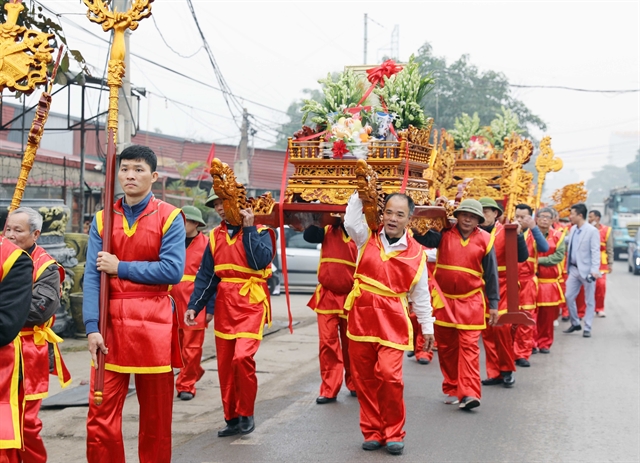 Life & Style
Life & Style

The HCM City Theatre Association in co-operation with the Department of Labour, Invalids and Social Affairs plans to upgrade a rest home for traditional artists who are financially disadvantaged.
 |
| Life of art: The late cải lương People’s Artist Phùng Há (left ), founder of the Rest Home for Artists and Artists’ Pagoda, which offers services to retired traditional theatre performers who are financially disadvantaged. (Photo by Huỳnh Công Minh) |
HCM CITY — The HCM City Theatre Association in co-operation with the Department of Labour, Invalids and Social Affairs plans to upgrade a rest home for traditional artists who are financially disadvantaged.
According to the association’s chairman and People’s Artist Ngọc Giàu, the Rest Home for Artists, which opened in 1998, will be upgraded and expanded.
“We will submit our project to local authorities this year,” he said.
The home, located on 600 sq metres of land in District 8’s Âu Dương Lân Street, was founded by the late People’s Artist Phùng Há, a star of cải lương (reformed opera) theatre.
It is home to more than 20 traditional artists aged 70-80, including cải lương and tuồng (classical drama) stars like Thanh An, Kiều Thu and Trường Sơn, who performed for more than 25 years and played a role in the theatre’s development.
Free food, treatment and health care, and even funeral services, are all offered to the residents. The home receives financial support from local authorities, a number of organisations and individuals.
The association’s deputy chairwoman Nguyễn Hồng Dung, one of the project’s founders, said, more than 200 poor artists working in different genres of theatre have signed up to live in the home but it’s currently at full capacity.
“The home should be upgraded and enlarged to satisfy the demand of artists, who devoted their youth to preserving our traditional theatre,” said Võ Trọng Nam, deputy director of the Department of Culture and Sports. He said he would work closely with the department to improve the building.
Paying the dues
The home’s founder Há, known as Miss Bảy, began her career in 1923 in Mỹ Tho Province, the cradle of cải lương art. By the 1950s, she was at the peak of her artistry and fame.
She worked hard to train younger colleagues, including the late actress Thanh Nga and young performers, and People’s Artist Bạch Tuyết and Kim Cương, who have won top prizes at national competitions and festivals.
Like many of her peers, Há devoted her energies to the stage, not marrying or having children. She spent her savings to build the Rest Home for Artists and the Artists’ Pagoda in 1958 in Gò Vấp District, which also has a cemetery for traditional artists.
The pagoda serves as a place of rest for nearly 1,000 theatre performers. Há died at the age of 99 in 2009.
Many of her students as well as veteran and young artists visit the home and pagoda on her birthday ceremony and national holidays to perform and raise funds for the home and pagoda. — VNS




